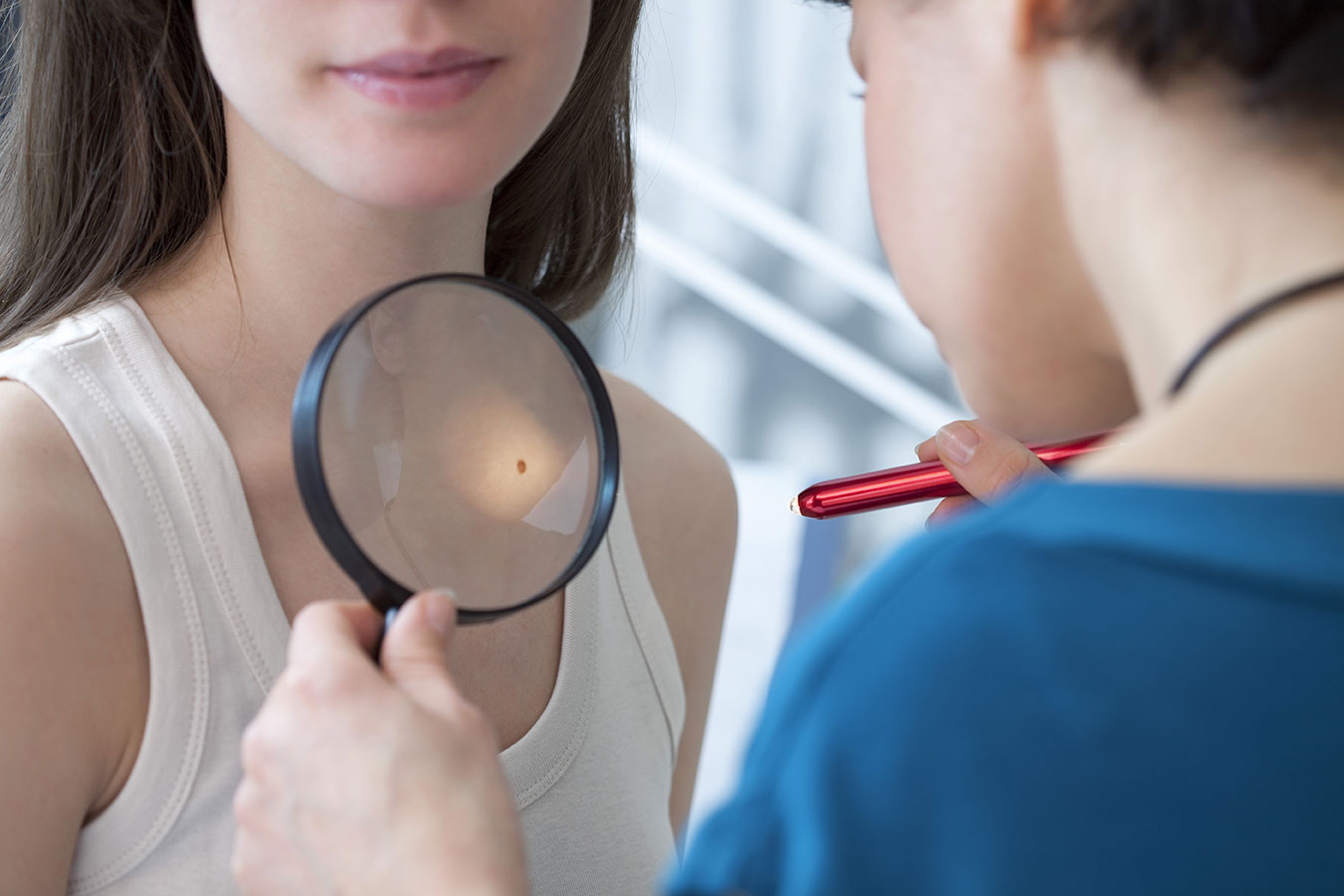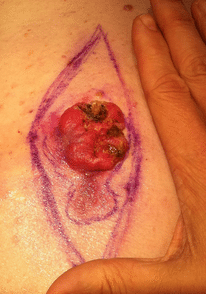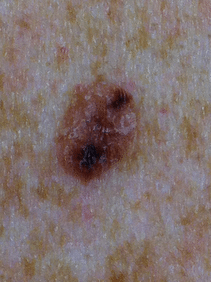Skin cancer doesn’t discriminate. Anyone can get skin cancer, whether young or old, fair or dark, and it’s the most common type of cancer in the United States. Each year, more new cases of skin cancer are diagnosed than cancers of the breast, prostate, lung and colon combined.
According to the American Academy of Dermatology, one in five Americans will be diagnosed with skin cancer in their lifetime. Fortunately, skin cancer is highly curable when detected and treated early. Most people should have a professional skin examination once a year. However, if you’ve had skin cancer, you have a family history of skin cancer, or you have reduced immunity, more frequent exams are recommended.
3 Most Common Types of Skin Cancers
-
Basal Cell Carcinoma: These usually present on sun-damaged skin and can appear to be a translucent or glassy pimple-like bump that does not heal, but can also look like a flat pink or discolored patch. Sometimes they bleed easily when touched or scraped. They do not usually itch or hurt. After a biopsy confirms the diagnosis, treatment may consist of surgical removal or superficial radiation therapy. Basal cell cancers are the most common skin cancers, yet they very rarely metastasize or threaten life.
- Squamous Cell Carcinoma: These types of cancer also presents on sun-exposed areas and are usually thick, crusty or scaly raised bumps. They may begin as a precancerous lesion called an actinic keratosis. Treatment consists of surgical removal or superficial radiation therapy, depending on the location and size of the cancer. It is the second most common type of skin cancer and can metastasize if at an advanced stage; particularly if found on the head and neck.
-
Melanoma: Melanoma is the most dangerous type because it can quickly spread to distant parts of the body through the lymphatic system. A combination of genetics and sun exposure predispose people to an increased risk for melanoma. Melanoma can be found on any part of the body. New moles in people over 30 years old or changing moles in any age group should be checked by a dermatologist. A biopsy is necessary to diagnose melanoma and treatment consists of surgical removal. Depending upon the depth of the melanoma additional testing maybe necessary.
When conducting a self-exam, look for the ABCDE’s of melanoma:
- Asymmetry. Asymmetry in moles, meaning one side doesn’t look like the other side.
- Border. A mole with an irregular or poorly defined border.
- Color. A variety of colors within a mole, including shades of brown or even white, red or blue coloring.
- Diameter. Moles wider than 6 millimeters, or the width of a pencil eraser.
- Evolving. Moles that change in size, shape or color, or appear different from other moles.
Tanning Beds and Skin Cancer
Tanning beds emit intensified ultraviolet radiation, which is the primary cause for skin cancer. For this reason, indoor tanning greatly increases your risk, even after only a few sessions. This is a dangerous way to tan and Dermatologists, the AAD and the medical community strongly recommend avoiding tanning beds.
Have you scheduled your yearly skin exam? Contact Epiphany Dermatology to make an appointment!
Additional Skin Cancer Resources
- [INFOGRAPHIC] Skin Cancer Awareness: Who’s Got Your Back?
- [VIDEO] Skin Cancer Awareness: Who’s Got Your Back?
- 5 Surprising Things You Didn’t Know About Skin Cancer
- Your Guide to Skin Cancer Treatment Options
- The Truth About Tanning [Infographic]
- 3 Easy Ways to Protect Your Child’s Skin from Sun Damage
- What to Look For: The ABCDE’s of Skin Cancer
- How Much Unseen Skin Damage Does The Sun Cause? {VIDEO}
- How to Spot Skin Cancer



